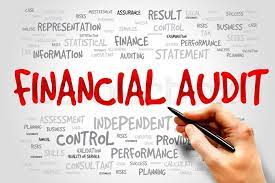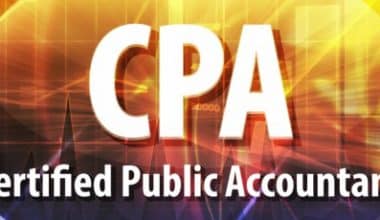Financial Audit is another essential aspect of the financial sector. It is in every company’s best interest to look into it carefully. The reason for this is to ensure accurate calculations of the company’s financial statements and what they represent in the present. Therefore, this article has been written to give you more insight into financial audit, report, preparation checklist, process, objectives, examples and pdf. First, what is a financial audit?
Financial Audit
A financial audit is an objective inspection and evaluation of an organization’s financial statements. Meanwhile, it ensures that financial records fairly and accurately represent transactions that claim to represent the organization. Although the standard is generally an international accounting standard.
However, auditors often review prepared financial statements against cash accounting or other organizational accounting standards. When an auditor expresses an opinion on the fairness of financial statements in accordance with accounting standards, they may seek audit evidence. This is to determine whether the financial statements contain material errors or other misstatements.
Who Performs Financial Audits?
Generally, financial audits are conducted by firms of certified public accountants who are experts in financial reporting. The financial audit is one of the many assurance services that accounting firms provide.
What Are the 3 Main Types of Audits?
There are three primary audit types: internal, external, and government or IRS. Government audits are tax reviews conducted by the Internal Revenue Service. Internal audits are conducted by qualified auditors within the organization.
Read Also: Financial Literacy Tests to Track your Progress Efficiently(+ quick guide and tips)
Objectives of Financial Audit
Major objectives of the financial audit include the following below:
- It communicates the rationality of the financial statements prepared by the administrative part of a particular company or public entity.
- Make sure that a company or public administration has reached the goals set in the display of goods or services.
- Ensure that all income-related controls are carried out efficiently.
- To confirm that the legal disposition, the standards, and the regulations that are applied in the execution of the activities that must be developed are being fulfilled.
- It has design recommendations that improve internal control and strengthen operational efficiency.
Financial Audit Examples
Financial audit examples. When you hear the term “audit”, you are immediately reminded of a group of IRS representatives who are checking files to find inconsistencies and errors in your company tax return. However, an audit is a separate kind of audit with completely different purposes and requirements. Banks and financial regulators (such as the Hellenic Capital Market Commission) usually require audits to verify the accuracy and performance of financial statements over a period of time. Well, there is no doubt that audit control is inconvenient, time-consuming, and costly. But, knowing the requirements can minimize the inconvenience to your business.
How Is Financial Audit Done?
An auditor will perform a number of tests to ensure that the financial records are complete and accurately reflect an organization’s financial results and condition. Control tests, transaction tests, analytical procedures, and balance tests are examples of these tests.
Read Also: Financial Intermediaries: The A-Z Guide for Beginners (+ free pdf)
Financial Audit Report
The financial audit report begins with the review of the company’s accounting records and ends with the publication of the report. The content of the report will depend on the content of the book and the regulatory service’s important transparency requirements during the audit process. One of these requirements is that only CPAs can see the books of publicly traded companies.
Meanwhile, the CPA will handle it in accordance with generally accepted auditing standards, and the US Securities and Exchange Commission is required to comply with the laws of certain agencies, such as the Accounting Oversight Committee and the American Institute of Certified Public Accountants.
What Are the 4 C’s of Auditing?
Regarding the evaluation of the adequacy of any risk-based audit plan by directors, there are four factors to consider:
- culture
- competitiveness
- compliance
- cybersecurity
Financial Audit Preparation Checklist
We have provided a free audit checklist for your business. meanwhile, make sure you get the best return and operate within all tax laws and government regulations. Note, your company financial audit checklist should undergo the following for accuracy:
- Budgets and Financial Statements
- Transaction Documentation
- Revenue and Sale Costs
- Expense approval
- Accurate Accounts
- Trial Balance
- Separation of Duties
- Major Contracts
- Bylaws and meeting minutes
- Confirm Regulatory Compliance
Financial Audit Process
The financial audit process involves an auditor evaluating your financial transactions and statements. There are four main steps in a typical corporate financial audit: planning, establishing internal controls, testing, and reporting.
#1. The Planning
To initiate an audit of your company, you need to develop a data collection plan. The first step is essential to gathering accurate information about commerce in order to better understand the company’s current financial situation. By determining the best data collection method, you can quickly collect error-free quantitative data. This is essential for maintaining the integrity of financial statements and making informed business decisions. It is also worth mentioning that the plans needed to organize business data must comply with GAAP regulations.
#2. The Internal Controls
Auditors who check the integrity of key business numbers do more than check the data they collect. They will also reaffirm the financial process you are carrying out. For this reason, establishing and strict adherence to internal controls is just as important as collecting historical information about business transactions. Otherwise, it will be difficult for auditors to produce accurate reports on the financial position of the organization.
Read Also: Financial Sector: All you should know (+ Detailed Examples)
#3. The Testing
If you have records and business data needed for internal controls, you have to ensure that it’s working properly. To determine the operational status of a company’s internal controls, the auditor can request other information about the company’s commerce, continue inspections, and gain a direct understanding of the implementation of internal controls.
#4. The Reporting
How will your company fare during the financial audit process? You can definitely see it in the reference or reporting stage. Non-specific approval is the highest score you can receive. Then comes the special approval, the disclaimer, and finally the adverse consequences. The audit report summarizes the financial statements and a fair assessment of the internal accounting procedures. Use these results to make the necessary adjustments to your internal procedures to help your accounting team. So, they can avoid data entry errors and generate more accurate and insightful data in the future.
What Documents Are Required for Audit?
The following are examples of audit documentation that should be compiled:
- Analyses conducted.
- Audit plans.
- Checklists.
- Confirmation letters.
- Memoranda and correspondence regarding issues found.
- Representation letters.
- Summaries of significant findings.
Is Financial Audit Mandatory?
According to the Act and the Companies (Accounts) Rules of 2014, every limited liability company must have its annual financial statements audited annually.
How Long Does a Financial Audit Take?
Audits are typically scheduled to last three months, which includes four weeks for planning, four weeks for fieldwork, and four weeks for report compilation. In general, auditors work on multiple projects in addition to your audit.
Financial Audit pdf
Have you paused to think about how pdfs on this topic can help your memory refresh by the day, just a click away from your mobile phone?. Then take advantage of these free downloadable pdfs on this topic.
What Is Needed for a Financial Audit?
Typically, auditors analyze a company’s bookkeeping and collect supporting documentation for their journal entries. These may include bank statements, invoices, receipts, income statements, balance sheets, and third-party confirmations.
What Is Checked in Financial Audit?
Audits are performed to guarantee that the financial statements presented are fair and accurate. Financial auditing is the examination of a company’s financial records to determine their accuracy and the absence of fraud, deception, or financial mismanagement.
Conclusion
A financial audit is usually initiated by specifying the name of the organization requesting the audit, the person performing the audit, and the name of the company being audited. It also summarizes the audit results. For example, a financial audit display financial data in a fair manner or briefly states whether financial reports and internal controls comply with current laws and regulations.
Related Articles
- AUDIT MANAGEMENT SYSTEM: Types and Best Auditing Tools In The Market(Opens in a new browser tab)
- FINANCIAL AUDIT: Meaning, Salary, Statements, Comparisons & All You Need.(Opens in a new browser tab)
- Social Audit: Features, Types, and Limitations (+ Detailed Guide)(Opens in a new browser tab)
- Social Audit: Features, Types, and Limitations (+ Detailed Guide)(Opens in a new browser tab)
- INTERNAL CONTROLS: Meaning and Examples(Opens in a new browser tab)
- IRS AUDIT: Definition, Types, and How an Attorney Can Help You






